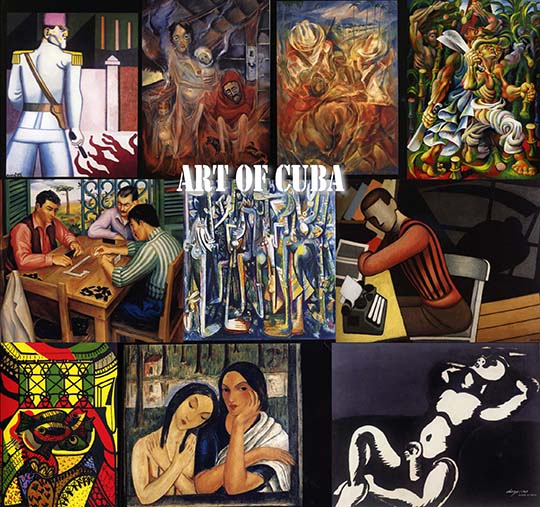Cuban Painters
Cuban art is a very diverse cultural blend of African, South American, European and North American design reflecting the diverse demographic of the island.Cuban artists embraced European modernism and the early part of the 20th century saw a growth in Cuban vanguardism movements, these movements were characterized by a mixture of modern artistic genres. Some of the more celebrated 20th-century Cuban artists include Amelia Pel‡ez (1896Ð1968), best known for a series of mural projects and painter Wifredo Lam (1902Ð1982) who created a highly personal version of modern primitivism.
In Havana Centre, a small neighborhood of artists have transformed the walls around them. October 2002
More internationally known is the work of photographer Alberto Korda, whose photographs following the early days of the Cuban Revolution included a picture of Che Guevara which was to become one of the most recognizable images of 20th century. There is a flourishing street art movement influenced by Latin American artists JosŽ Guadalupe Posada and the muralist Diego Rivera.
In the late 19th century, landscapes dominated Cuban art and classicism was still the preferred genre.The radical artistic movements that transformed European art in the first decades of the century arrived in Latin America in the 1920s to form part of a vigorous current of artistic, cultural, and social innovation.
By the late 1920s, the Vanguardia artists had rejected the academic conventions of Cuba's national art academy. In their formative years, many had lived in Paris, where they studied and absorbed the tenets of surrealism, cubism, and modernist primitivism. Modernism burst on the Cuban scene as part of the critical movement of national regeneration that arose in opposition to the dictatorship of Gerardo Machado, American neo-colonial control and the consequent economic crisis.[3] They returned to Cuba committed to new artistic innovation and keen to embrace the heritage of their island. These artists became increasingly political in their ideology, viewing the rural poor as symbols of national identity in contrast to the ruling elite of post independence Cuba. The vanguardia artists achieved international recognition in 2003 with the Modern Cuban Painting show at the Museum of Modern Art in New York, subsequently showing in Paris.
More to come

[NEWSLETTER]-[PRIVACY]-[TERMS OF USE]
Site designed by Yours Truly
